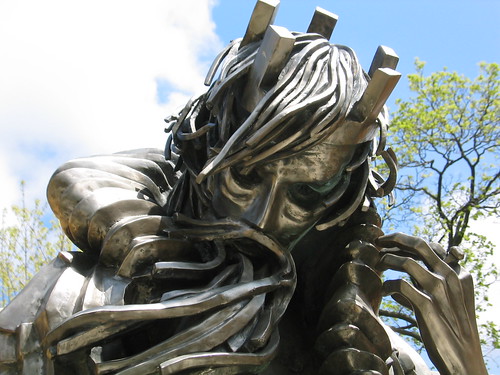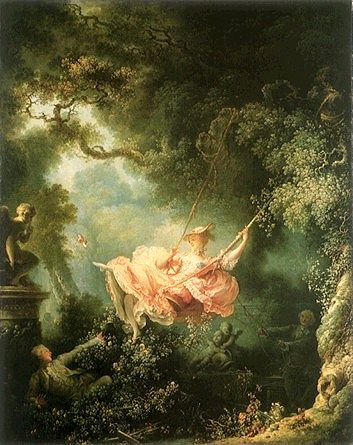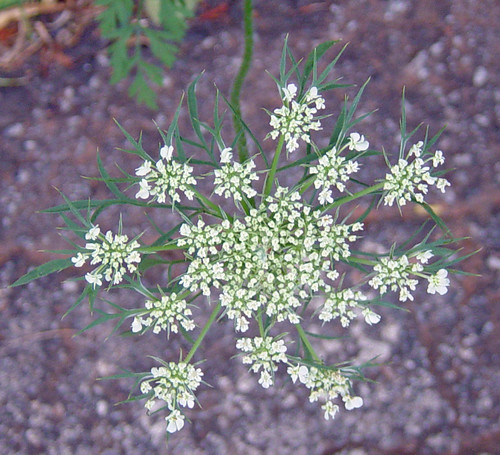For your own sakes, please take some time with the following review assignments this weekend.
1. Here's a link to the literary terms. Write questions in the comment box.
2. (This site offers a few additional terms and includes a review of writing movements and styles which I had intended to get to this week. Very few questions deal with writing movements (romanticism, modernism, surrealism) but it is a good idea to review, refresh, and perhaps learn something new. Write questions in the comment box.
3. This year we've read the following novels and plays: Invisible Man, Wide Sargasso Sea, Jane Eyre, A Portrait of the Artist as a Young Man, As I Lay Dying, Antigone, a play of your choice, King Lear, Waiting for Godot, Slaughterhouse Five, and Heart of Darkness (or "a work of similar literary quality").
In the comment box, I'd like for you to identify and comment on the protagonist, antagonist(s), significant characters, major scenes, motifs/symbols, themes, tone/mood, narrative perspective, writing style (diction, syntax), and anything else you think is relevant.
Please add on to each other's identifications and respond to each other's comments.
Everyone should post something significant (identification/comment/add on/response) about at least three works by the beginning of class on Tuesday May 6.
{Dan, the name of Edna St. Vincent Millay poem is sonnet XII from Mine the Harvest.}
Friday, May 2, 2008
Subscribe to:
Post Comments (Atom)








13 comments:
Invisible Man
Protagonist: The narrator (THE Invisible Man)
Antagonists: Dr. Bledsoe, Lucious Brockway, Brother Jack, Ras...
In a way, the Invisible Man is an ENEMY OF THE PEOPLE.
Important Characters: Mr. Norton, Jim Trueblood, crazy veteran doctor in the bar (name, please?), Clifton, Rinehart, Emma
Some Major Scenes: Jim Trueblood and his dream, Dr. Bledsoe's speech after Mr. Norton incident, the entire time in the paint factory, particularly in the boiler room with Brockway, Invisible Man's first impromptu speech, Putting on Rinehart's glasses, Emma trying to seduce InvisMan...
Themes/Motifs: Colors, Sight, (I don't know how much we talked about this but I would say) Roles/Expectations, machines, underground, light/dark...
I remember we discussed the Invisible Man's tone and it seems that he is ambivalent. An important quote would be "Even an invisible man has a moral debt to society."
I recall a Supercargo being in the bar (Golden Day?)
Antigone
Sophocles
Protagonist: Antigone
Antagonist: Creon, everyone who supports Creon
Significant Characters: Ismene, Haemon, Tiresias, Boy, Nurse, Eurydice, Chorus, Guards/Messenger/Page,
Major Scenes: In the prologue the audience learns what has happened to the sons of Oedipus, Polynices and Eteocles. Polynices is the betrayer of the city Thebes, the city in which the story occurs. Antigone tells Ismene her plan to perform burial rights for Polynices. Creon announces that anyone who touches Polynices will be executed. A guard tells Creon that the body has been buried. Antigone is caught; Ismene claims falsely that she was involved. Haemon pleas to have Antigone saved. Creon decides to not execute Ismene. Antigone is closed in alive in a tomb, she then kills herself. Tiresias the prophet predicts tragedy. Haemon kills himself. After hearing about her sons death Eurydice the queen also kills herself. The play closes with Creon praying for death.
Themes/Motifs/Symbols: unwritten laws/moral obligations (Creon does not allow the body to be buried/ religion decrees that bodies must be buried); suicide; sight/blindness; Antigone entombed (represents limit of free will)
Perspective: Told from point of view of the chorus, the chorus explains and has access to character information. Spoken out loud the audience also experiences the views of Antigone and Creon in their separate monologues.
Writing style: As this story has been translated it is difficult to identify a definite writing style of Sophocles. Any style could representative of the translator’s opinion.
Note: on spark notes apparently someone other than Sophocles wrote a play called Antigone. I found this very confusing, at first I thought the author of Spark notes had a cynical view of Antigone, but when Tiresias did not appear on the character list I became suspicious. I thought this other author was the translator of a version of Antigone.
A Portrait of the Artist as a Young Man
Protagonist: Stephen Dedalus
Other Characters: Parnell-Irish political leader (starts debate at dinner table over separating Church and State [because Parnell had an affair], in which Dante takes side of Church), Father Dolan, Father Arnall (Jonathan Edwards-like speaker), Cranly-Stephen’s friend in part five that notably tells Stephen to go to Church for his mother’s sake (do you believe/disbelieve question), Emma Clery – vaguely described girl that Stephen sees as symbolic of women, Simon Dedalus – Stephen’s father and Irish patriot
Major Scenes: Parnell debate, Clongowes Wood College, Belvedere, scene with prostitute, speeches on hell, Stephen as deeply religious, scene at beach, university and theory on esthetics
Themes/Motifs: religion, flight, identity, beauty, name significance
Notes: It probably helps to recall Stephen’s failure in shedding his Irish Catholic upbringing. Even at the end, when he becomes an artist, Stephen is a sort of priest-artist. The book may also be viewed as a series of trial flights (with Stephen as Icarus [son of Dedalus]. Stephen’s final theory on art involves a “truth that arrests”—a sort of static beauty where everything that inspires action is consequently pornography.
Jane Eyre
Plot:
-Jane is an orphan and lives with her cruel aunt Mrs Reed
-Jane is sent away to the Lowood school
-The school is miserable
-Jane becomes friends with Helen Burns who dies
-After Jane graduates she teaches at the school for a couple years
-Jane becomes a governess and teaches a young French girl named Adele
-Jane secretely falls in love with Rochester
-Rochester blaims a fire on Grace Pool when it is really Bertha
-Rochester leaves and brings home Miss Ingram
-Rochester surprises Jane by proposing to her
-On their wedding day the voice of Mr Mason proclaims that Rochester already has a wife
-Rochester claims his wife Bertha is mad
-Jane flees
-Jane finds relatives and stays with them
-She finds out that her uncle died and left her money
-St John decides to go to India to be a missionary and wants Jane to come
-Jane hears Rochester's voice
-Jane goes back to Thornfield which has been burned by Bertha
-Rochester lost his sight and hand
- Rochester and Jane marry, Rochester regains his sight in one eye, they have a baby boy and live happily ever after
Jane Eyre Themes:
-Love and freedom
-IDENTITY
-Religion
-Social class and gender relations
-Madness
Wide Sargasso Sea
Protagonist: Antoinette
Antagonists: Rochester, her mother, the maid girl Rochester sleeps with (i can't remember her name?), the townspeople against her and her family
Other characters: Tia, the witch doctor servant (don't remember her name either), her stepfather, her brother? ( i can't really remember any of the names. oops)
major scenes:
-when the towns people burn down Antoinette's families house
-Antoinette's mother's breakdown where she yells at Antoinette to leave
-The wedding between Rochester and Antoinette
-When Antoinette tries to win Rochester back by poisoning him
-Antoinette's dream, then when she actually burns down the house
motifs and themes- flowers and nature, death, fire, religion, social classes, madness
Dan, I think Supercargo was the big (black?) man that watches the veterans so that they don't get unruly.
Also, I scanned the passage and found no name to speak of. Also, the man who I thought was a doctor is actually a vet.
1984
The main character's name is Winston Smith. Significatn characters include Julia, Syme, Charrington, and Big Brother (antagonist). Major scenes are anything from the bedroom, and anything in the Ministry of Love. Motifs and themes are Totalitarianism and control, and doublespeak. Symbols are shurches and paperweights. Sorry I did not post this before.
As I Lay Dieing
Characters:
Darl: Attempts to reconcile his disconnection with Annie by ending the disrespectful flaunting of her body about the countryside.
Cash: Balances his deep familial confusion with an intense interest in carpentry.
Jewel: Not Anse's child, son of Whitfield? Replaces his mother with a horse. Anse ends up selling that horse.
Vardaman: Equates his dead mother with a dead fish. Has a strong connection with Darl. Oftentimes their language mingle.
Dewey Dell: Young pregnant girl, only girl of the batch. Has a bigger purpose to go to Jefferson other than burying her mother. Attempts to get an abortion but is instead raped.
Anse: Doesn't work, wants new teeth, gets new wife.
Annie: Very bitter woman who fails to express her feelings in words. Destroys her relationship with Anse psychologically and sees her own death as a sort of way of punishing Anse.
Tull: Sort of boring, does not understand the family. What is the family's last name?
Mrs. Tull (first name?): Bad baker, one of the few characters who really likes Darl. Annie has some real resentment for Mrs. Tull.
Drug store guy?
The guy who owns the barn which Darl burns down, Samson?
Not to nitpick, but I believe you meant Addie, not Annie. And Dying, not dieing.
I still love and care about you very much!
-Ben
I MISS THIS BLOG SO MUCH.
Post a Comment